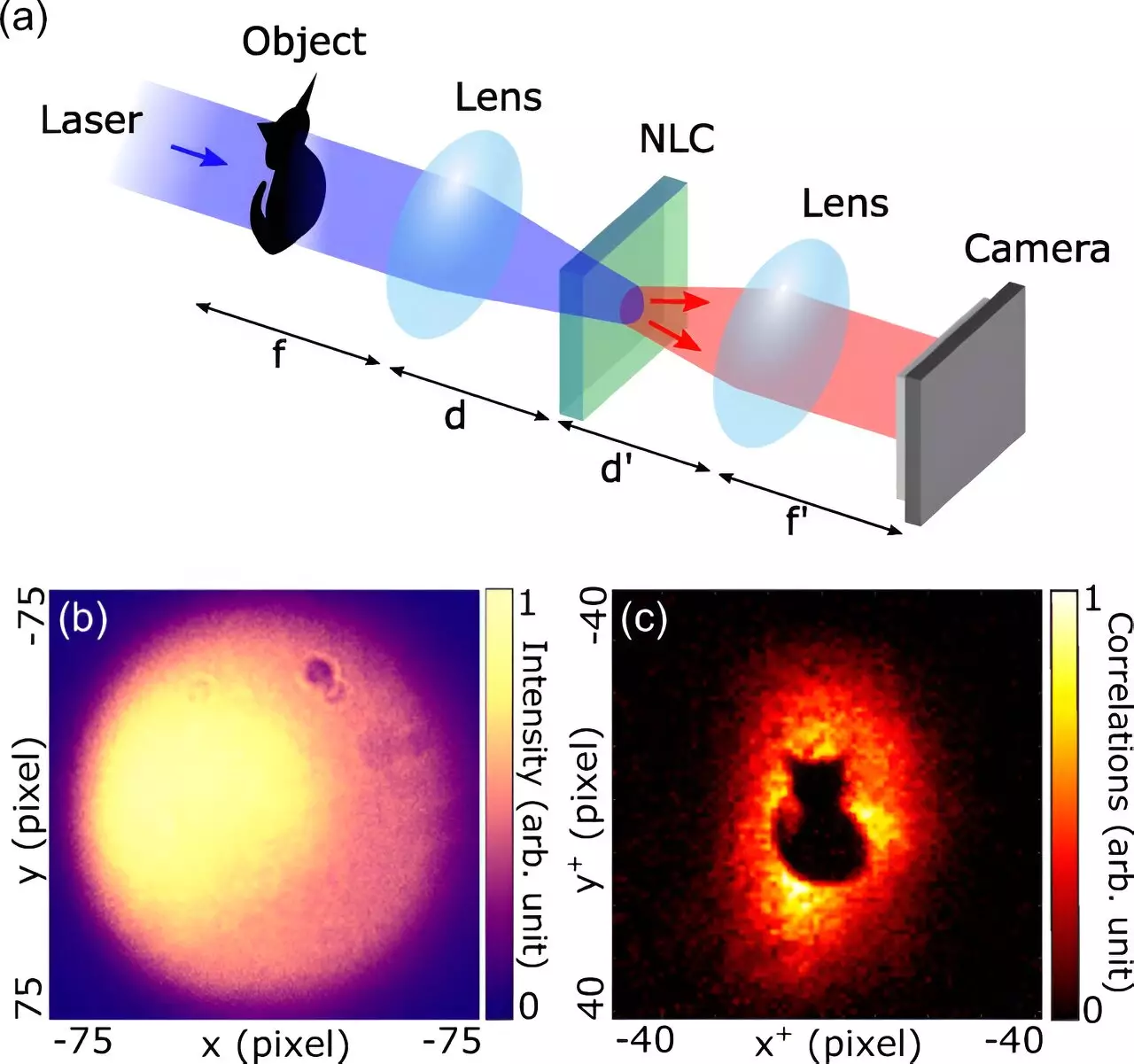In an era dominated by technological advancements, researchers at the Paris Institute of Nanoscience, affiliated with Sorbonne University, have made a transformative discovery in the field of quantum optics. They have devised a groundbreaking method that allows images to be encoded into the quantum correlations of photon pairs, rendering these images imperceptible to traditional imaging systems. The findings of this research, recently published in the journal Physical Review Letters, could set the stage for vital applications in quantum computing, cryptography, and advanced imaging techniques.
Entangled photons exhibit unique properties that make them invaluable for various quantum photonics applications. These photons can arise from a process known as spontaneous parametric down-conversion (SPDC), which occurs within nonlinear crystals. In this process, an energetic photon, typically from a blue laser, is converted into two lower-energy entangled photons, usually in the infrared spectrum. This phenomenon not only produces entangled photon pairs but also yields specific quantum correlations that are crucial in many advanced applications.
Precise control over these quantum correlations is essential for the successful implementation of technologies reliant on entangled photons. The ability to manipulate photon characteristics—particularly through altering the properties of the high-energy pump laser—opens up the possibility of encoding information directly into the spatial correlations of entangled photon pairs. Such flexibility enables researchers to explore new frontiers in image encoding and retrieval.
In their study, the researchers explored a method to structure spatial correlations among entangled photons based on the shape of a physical object. The experimental setup involved placing the object to encode in the object plane of a lens positioned prior to the nonlinear crystal, followed by a second lens tasked with imaging the object onto a camera. In a conventional imaging framework, one would expect to observe a direct intensity image of the object. However, when the crystal is involved, the situation shifts dramatically.
The SPDC process occurs, generating pairs of entangled photons that, if filtered appropriately, yield a uniform intensity on the camera that conceals any information about the object. The crux of the innovation lies in the realization that the information is not lost but instead encoded within the spatial correlations characteristic of the photon pairs. By examining the position of each photon relative to its entangled partner, researchers discovered that they could reconstruct the object’s image—a feat that traditional imaging would deem impossible.
Accomplishing the reconstruction of the encoded image requires specialized equipment, including a sensitive single-photon camera and advanced algorithms designed to identify photon coincidences across multiple acquisitions. This intricate process emphasizes a new way of interpreting light, focusing not merely on individual photon detection but rather on the associate spatial relationships and temporal coincidences.
As Chloé Vernière, the Ph.D. student leading the study, remarks, the conventional method of simply counting and imaging photons yields an illusion of no data. However, she illustrates that by analyzing the spatial distribution patterns of simultaneous photon arrivals, significant information can emerge. Hugo Defienne, her thesis advisor, expands upon this perspective by asserting that this research capitalizes on a scarcely utilized aspect of light—the spatial correlations, which may serve as a new medium to convey images.
The potential applications emerging from this research are expansive. Scientists envision utilizing this innovative imaging support system not only for refined cryptographic methods but also in various scenarios involving imaging in scattering media, a challenge that has long plagued optical techniques. By fine-tuning the characteristics of the nonlinear crystal, future explorations might even allow multiple images to coexist within a single beam, retrievable by adjusting the camera’s position in different optical planes.
The research emerging from the Paris Institute of Nanoscience represents a significant step forward in the realms of quantum imaging and information encoding. By harnessing the unique properties of entangled photon pairs, this new method opens doors to advanced applications that may define the future of quantum communication, secure cryptography, and groundbreaking imaging technologies. As researchers continue to push the boundaries of understanding in this field, the implications of these discoveries are just beginning to unfold, promising a future rich with possibilities.


Leave a Reply